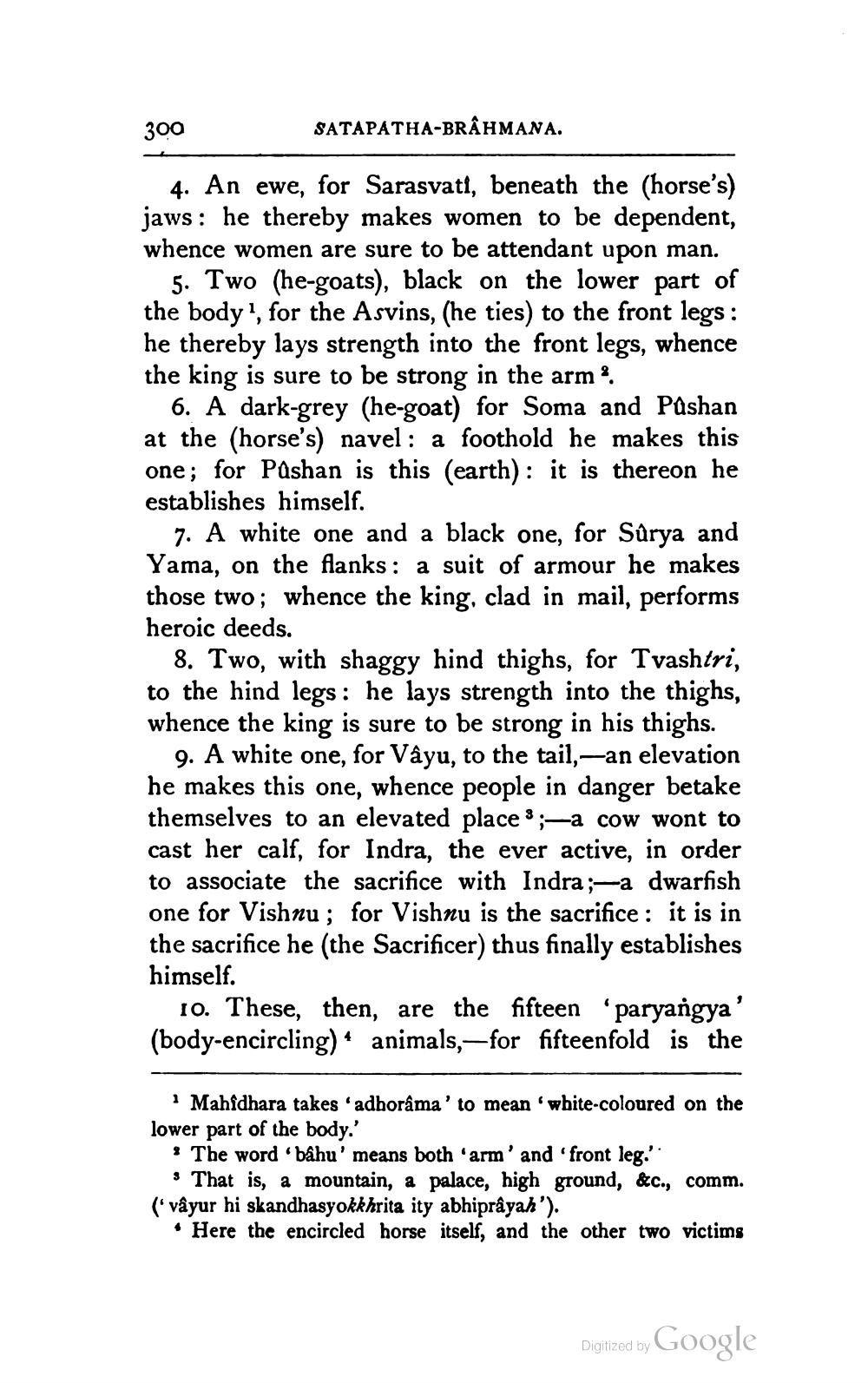________________
300
SATAPATHA-BRÂHMANA.
4. An ewe, for Sarasvati, beneath the (horse's) jaws: he thereby makes women to be dependent, whence women are sure to be attendant upon man.
5. Two (he-goats), black on the lower part of the body, for the Asvins, (he ties) to the front legs : he thereby lays strength into the front legs, whence the king is sure to be strong in the arm
6. A dark-grey (he-goat) for Soma and Pashan at the (horse's) navel: a foothold he makes this one; for Pashan is this (earth): it is thereon he establishes himself.
7. A white one and a black one, for Sûrya and Yama, on the flanks: a suit of armour he makes those two; whence the king, clad in mail, performs heroic deeds.
8. Two, with shaggy hind thighs, for Tvashtri, to the hind legs : he lays strength into the thighs, whence the king is sure to be strong in his thighs.
9. A white one, for Vayu, to the tail,—an elevation he makes this one, whence people in danger betake themselves to an elevated place : ;-a cow wont to cast her calf, for Indra, the ever active, in order to associate the sacrifice with Indra;-a dwarfish one for Vishnu ; for Vishnu is the sacrifice: it is in the sacrifice he (the Sacrificer) thus finally establishes himself.
10. These, then, are the fifteen 'paryangya' (body-encircling) * animals,—for fifteenfold is the
Mahidhara takes adhorâma' to mean'white-coloured on the lower part of the body.'
• The word “bâhu' means both 'arm' and 'front leg."
3 That is, a mountain, a palace, high ground, &c., comm. (* vâyur hi skandhasyokkhrita ity abhiprayah').
. Here the encircled horse itself, and the other two victims
Digitized by Google




